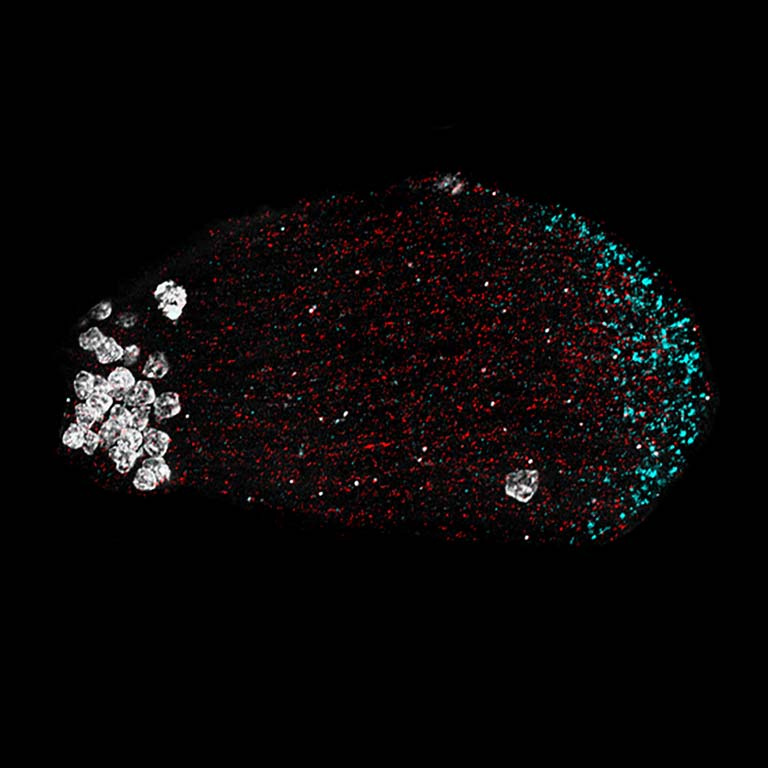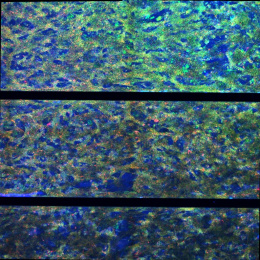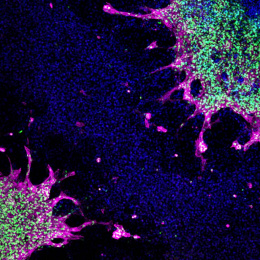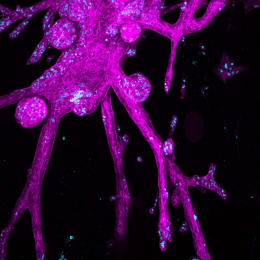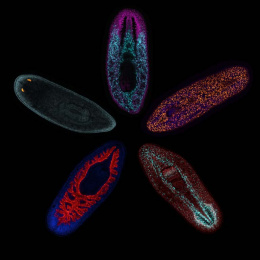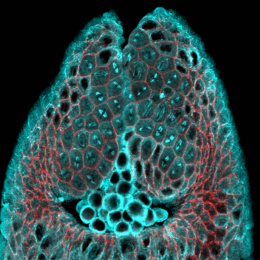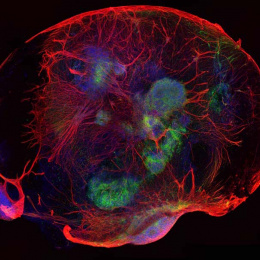Spermatid Polarization
Spermatid Polarization
Jaclyn Fingerhut
MIT Department of Biology, Whitehead Institute
Drosophila produce some of the largest sperm in the animal kingdom with a mature sperm measuring almost 2mm in length (human sperm are 50um). Cells, especially very large cells, can benefit from localizing cellular components to specific regions of the cell where they are needed. Drosophila sperm do not synthesize new mRNA (the instructions for making the proteins needed for cellular function) and instead store mRNAs from earlier in development for use during sperm maturation. This image shows a cyst of spermatids that have started the process of elongating. The nuclei are at one end of the cyst (white) and the sperm tails are elongating at the other end of the cyst. The red and cyan show two different types of mRNAs – the red one is diffuse throughout the cyst while the cyan one is polarized at one end. This polarization of specific mRNAs is critical for proper sperm development with mis-localization resulting in sterility.
